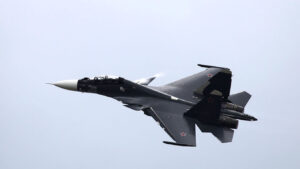The Rich History of Horse Racing in Italy: From the 18th Century to Modern Times
Early Beginnings: 18th Century
Horse racing in Italy has a storied history that dates back to the end of the 18th century. The first documented races took place in 1773 when Vittorio Amedeo II, Duke of Savoy, imported horses from Annecy for Count Benso di Cavour. This event marks the early efforts to improve horse breeding, signifying the existence of selective breeding farms.
19th Century Developments
The early 1800s saw horse racing become more widespread among the Italian nobility. These races, held on unpaved roads and in the countryside, were primarily for honor and visibility rather than monetary prizes. By 1846, Bologna hosted the first races with “little seats,” precursors to modern sulkies used in trot races.
In 1835, Turin saw the establishment of the first horse racing society, with notable figures such as Count Camillo Benso di Cavour joining. The first periodical dedicated to horse racing, “Giornale della Società Nazionale delle Corse,” was founded in 1855. The first Italian Derby took place in Turin in 1860.
The Birth of Formal Institutions
The late 19th century marked significant strides in formalizing horse racing. The foundations for the stud book were established in 1870, and the genealogical book on thoroughbreds followed. By 1881, the Jockey Club d’Italia was established, with subsequent foundations like the Società degli Steeple Chases d’Italia in 1892.
The trot race gained prominence in 1885 with the formation of the “Consociazione Ippica Italiana,” leading to the genealogical book of the indigenous trotting horse. Prominent trot races were held across cities like Bologna, Modena, and Naples.
Early 20th Century and World War I
The early 1900s focused on selecting high-quality foals, including importing horses from abroad. However, World War I halted these advancements as horses were needed on the frontlines. Post-war recovery was aided by importing French thoroughbreds, notably Havresac II, who sired champions like Cavaliere d’Arpino, Nearco, and Ribot, trained by Federico Tesio.
Establishment of SIRE and UNIRE
In 1919, the Società per l’Incoraggiamento delle Razze Equine (SIRE) was founded, significantly boosting the Milan racetrack’s calendar. By 1932, SIRE promoted trot races by importing horses from the United States.
That same year, the Royal Decree established UNIRE, under the Ministry of Agriculture’s supervision. The 1930s were a golden era for Italian horse racing, with significant successes in both trot and gallop races.
World War II and Post-War Recovery
World War II caused a reduction in races and the closure of many stables. However, racing resumed partially in 1943 through mediation with the German army. Full resumption awaited the liberation of Rome in 1945.
The post-war period saw the arrival of legendary horses like Tenerani in 1947 and Ribot in 1952, who remained unbeaten in all 16 races. The 1950s and 60s were prosperous decades for Italian horse racing, bolstered by solid financing and economic growth.
Modernization and Technological Advancements
In 1989, UNIRE adopted new by-laws, expanding horse racing agencies across Italy. A significant change came in 1996 when Sogei, the IT arm of the Ministry of Finance, took over managing horse racing totalizators, while fixed-odds betting remained with UNIRE.
The Era of Varenne
In 1998, Varenne, born in Zenzalino di Copparo, began his illustrious career. Varenne won numerous prestigious races, including the Prix d’Amérique, and set speed records, becoming a legend in trot racing.
Contemporary Horse Racing Governance
Today, the Ministry of Agricultural and Forestry Policies oversees Italian horse racing, having absorbed UNIRE (later Assi). The Ministry of the Economy and Finance manages gaming, replacing Totip in 2007 with new betting types like quarté, quinté, and V7.
Conclusion
Italian horse racing boasts a rich and dynamic history, from its 18th-century roots to modern-day advancements. Despite challenges, it remains a globally recognized sport, celebrated for its high-quality horse breeding and significant contributions to the racing world.



